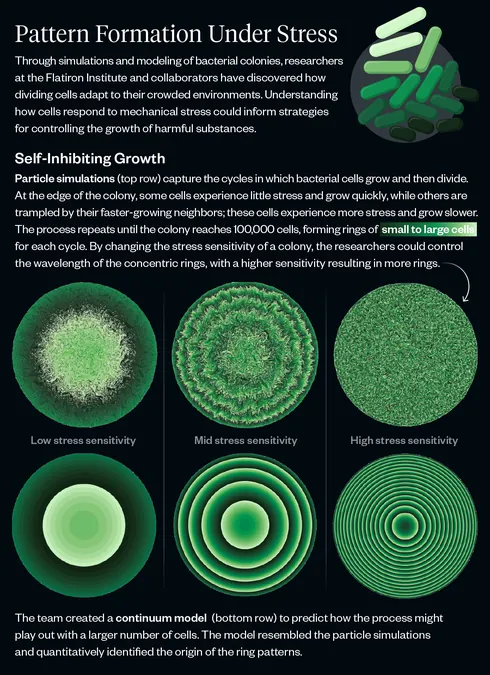
The Stunning Science Behind Cellular Confinement: How Crowded Conditions Spark Beautiful Patterns
2024-10-10
Author: Arjun
Unveiling the Mechanics of Cell Division
The research journey began with a curiosity about biophysical modeling, focusing on how micro-level interactions impact macro-level behaviors in biological systems. The team initially explored cell proliferation—the remarkable process by which cells create clones of themselves—using simulations of growing bacterial colonies.
While most biological processes scale exponentially—where one cell divides into two, which then divide into four, and so on—the researchers observed a counterintuitive slowdown in proliferation as the simulated environment became more crowded.
Weady clarified, “In the early stages, a single cell feels minimal stress. As it divides and the density increases, cells nearer to the center of the colony experience increased pressure, leading them to decelerate their growth. This results in distinctive bands of growth sensitivity, creating those striking concentric circles.”
Through this innovative study, the researchers transitioned from simple particle simulations—tracking individual bacterial divisions—to developing a continuum model that simulates a vast number of cells, transforming discrete interactions into a continuous framework. This broader perspective allowed for a deeper understanding of the robustness of these cellular behaviors.
Implications for Medical Science and Beyond
The implications of this research extend far beyond mere curiosity. Understanding cell proliferation's natural regulation is crucial, particularly when considering harmful bacterial infections. Weady emphasizes, “Identifying environmental factors that amplify a cell's response to mechanical stress could provide strategies to intentionally slow down exponential growth.”
The model they created is now poised to be a valuable resource for researchers investigating various cellular behaviors, whether in response to physical stressors or nutrient availabilities. “This model can guide inquiries about how cells react under different conditions, so it opens exciting possibilities for future research,” Weady shares.
Conclusion: A New Era in Cell Growth Studies?
As more studies delve into the physical constraints that influence cellular behavior, we may discover transformative methods to control the growth of not just bacterial colonies but also other cell types, potentially revolutionizing healthcare and bioengineering. Stay tuned, as the future promises an unfolding tapestry of discoveries—all sparked by the humble behavior of densely populated cells!



 Brasil (PT)
Brasil (PT)
 Canada (EN)
Canada (EN)
 Chile (ES)
Chile (ES)
 España (ES)
España (ES)
 France (FR)
France (FR)
 Hong Kong (EN)
Hong Kong (EN)
 Italia (IT)
Italia (IT)
 日本 (JA)
日本 (JA)
 Magyarország (HU)
Magyarország (HU)
 Norge (NO)
Norge (NO)
 Polska (PL)
Polska (PL)
 Schweiz (DE)
Schweiz (DE)
 Singapore (EN)
Singapore (EN)
 Sverige (SV)
Sverige (SV)
 Suomi (FI)
Suomi (FI)
 Türkiye (TR)
Türkiye (TR)